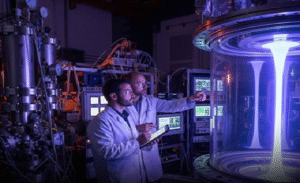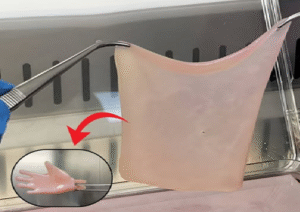Wing Commander Rakesh Sharma, born on January 13, 1949, in Patiala, Punjab, is celebrated as the first Indian citizen to journey into space. A distinguished Indian Air Force (IAF) officer and test pilot, Sharma’s historic voyage was part of a collaborative mission between the Indian Space Research Organisation (ISRO) and the Soviet Union’s space program.
Sharma’s early education took place at St. George’s Grammar School in Hyderabad, followed by graduation from Nizam College. He joined the National Defence Academy in July 1966 and was commissioned into the IAF in 1970. As a MiG-21 pilot, he flew 21 combat missions during the 1971 Bangladesh Liberation War. By 1984, he had risen to the rank of Squadron Leader and was selected for the Intercosmos program, a testament to his exceptional skills and dedication.
On April 3, 1984, Sharma launched aboard the Soviet spacecraft Soyuz T-11, accompanied by commander Yury Malyshev and flight engineer Gennadi Strekalov. The mission successfully docked with the Salyut 7 space station, where Sharma spent 7 days, 21 hours, and 40 minutes conducting scientific and technical experiments, focusing on bio-medicine and remote sensing. During a televised interaction, when then-Prime Minister Indira Gandhi inquired about India’s appearance from space, Sharma famously replied, “Saare Jahan Se Achha” (better than the entire world), quoting a renowned patriotic poem by Iqbal.
In recognition of his groundbreaking achievement, Sharma received the Hero of the Soviet Union award and India’s highest peacetime gallantry award, the Ashoka Chakra. After retiring from the IAF with the rank of Wing Commander, he joined Hindustan Aeronautics Limited (HAL) in 1987, serving as the chief test pilot in the Nashik Division until 1992, and later in Bangalore. He retired from flying in 2001.
In recent years, Sharma has shared insights from his historic journey. He described the re-entry to Earth aboard the Soyuz spacecraft as the most thrilling part of his space travel, noting that for a moment, he thought he might not make it back safely. Reflecting on the progress in human spaceflight, he remarked that humans have learned how to survive in space, indicating significant advancements since his mission. Sharma’s pioneering journey continues to inspire India’s space endeavors, including the upcoming Gaganyaan mission, which aims to send Indian astronauts into space aboard an indigenous spacecraft.







